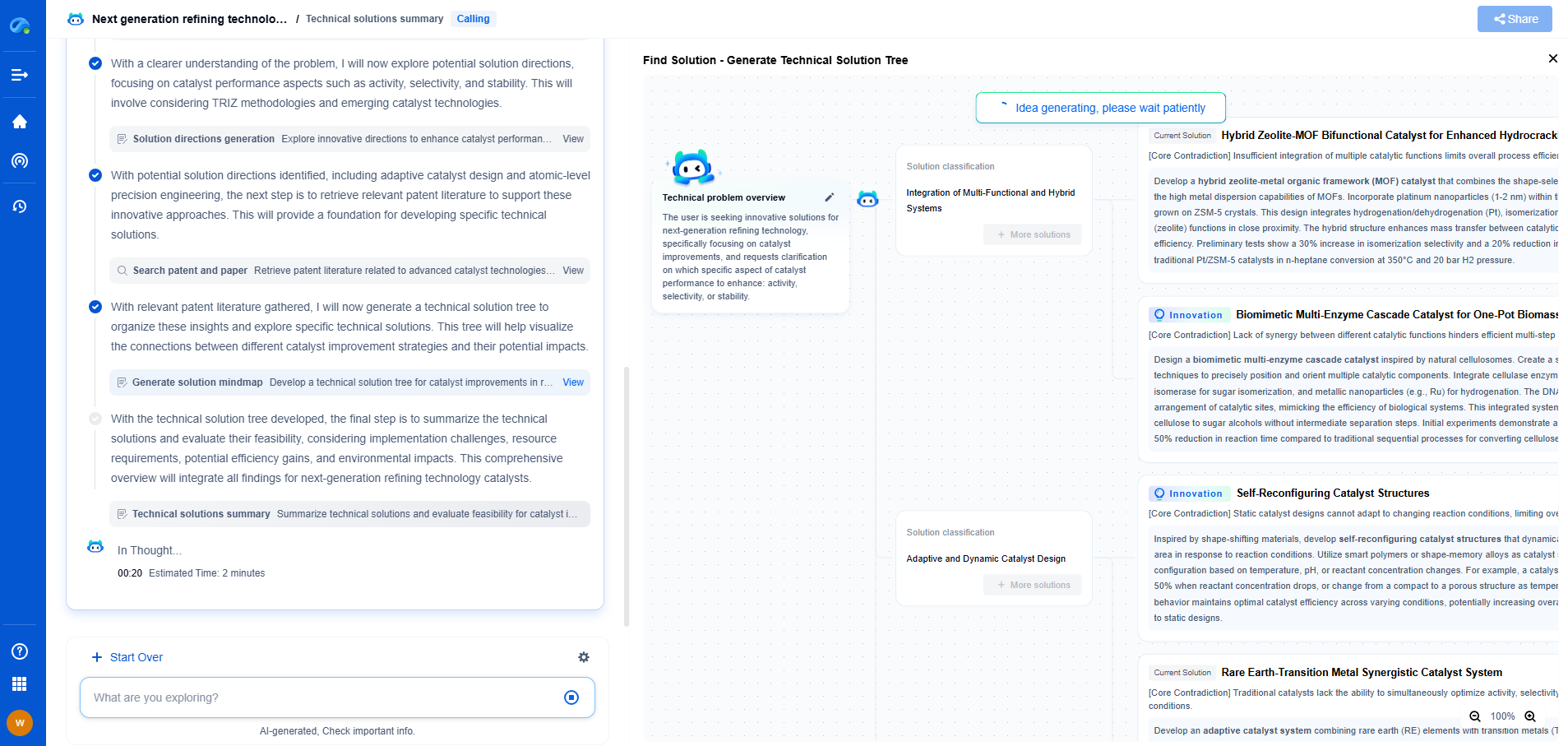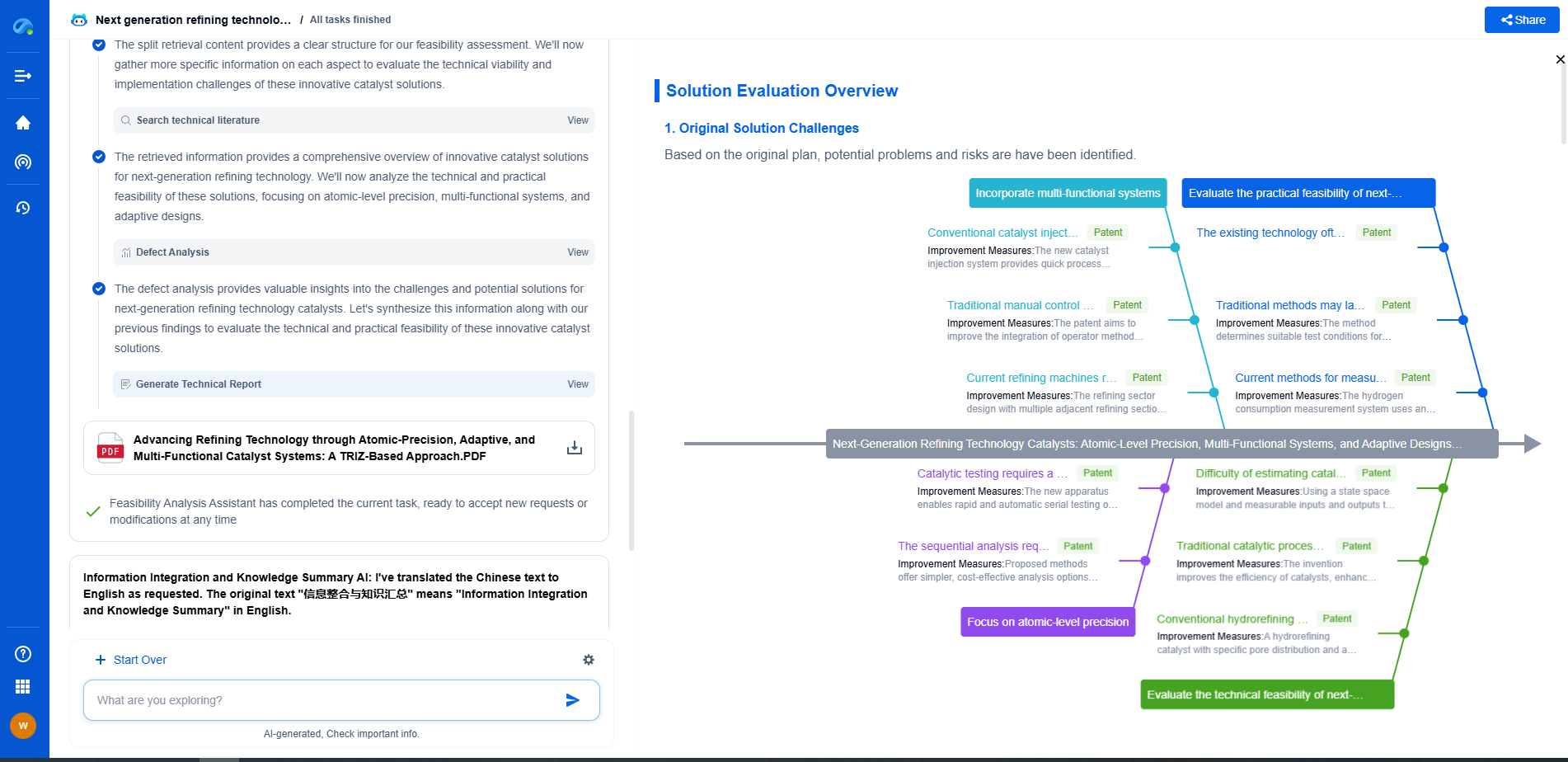Dealing with False Positives in Intelligent Fault Detection Systems
JUL 2, 2025 |
Intelligent fault detection systems have become an integral part of modern industrial processes, offering the capability to identify and rectify potential issues before they result in significant downtime or damage. These systems leverage advanced technologies, including machine learning and artificial intelligence, to monitor equipment, predict failures, and enhance overall operational efficiency. However, like any technology, they are not without their challenges. A common issue that arises is the occurrence of false positives—incorrect alerts indicating a problem where none exists. This can lead to unnecessary interventions, wasted resources, and a potential loss of confidence in the system. Addressing false positives is crucial for maintaining the effectiveness and credibility of these systems.
Understanding False Positives
False positives occur when a fault detection system incorrectly signals an issue. This misidentification can result from various factors, such as noise in the data, inadequate calibration, or overly sensitive algorithms. The ramifications of false positives extend beyond just operational inefficiencies; they can also negatively impact the workforce by causing fatigue and frustration among engineers and technicians who must repeatedly verify and dismiss these erroneous alerts. Understanding the root causes of false positives is the first step in mitigating their impact.
Impact on Operations
False positives not only disrupt daily operations but also skew the perception of a system's reliability. When a detection system frequently triggers false alarms, it can become the proverbial "boy who cried wolf," leading to a desensitization where genuine alerts are potentially ignored. This complacency can be dangerous, as it increases the risk of missing a real fault that could result in substantial damage or downtime. Additionally, the financial implications of responding to false positives can be substantial, with resources diverted away from productive activities to troubleshoot non-existent issues.
Strategies for Reducing False Positives
1. Data Quality Improvement
Ensuring high-quality data input is fundamental to reducing false positives. This entails regular maintenance and calibration of sensors, as well as implementing robust data validation processes to filter out noise and inaccuracies before data analysis.
2. Algorithm Refinement
Refining the algorithms that drive fault detection systems is essential. This can be achieved through continuous learning models that adapt to changing conditions and improve detection accuracy over time. Collaborating with domain experts to fine-tune these algorithms can also help in distinguishing between normal operational variances and actual faults.
3. Threshold Optimization
Adjusting the sensitivity thresholds of detection systems can significantly reduce false positives. While setting lower thresholds might capture more genuine faults, it can also increase false positives. Striking a balance based on historical data and risk assessment is necessary for optimal performance.
4. Incorporating Contextual Awareness
Integrating contextual information into fault detection systems can enhance their decision-making process. By considering factors such as operation modes, environmental conditions, and historical performance data, systems can better differentiate between normal fluctuations and true anomalies.
5. Regular System Audits
Conducting regular audits of fault detection systems can help identify patterns related to false positives and guide necessary adjustments. These audits should include both technical evaluations and feedback from personnel who interact with the system daily.
Conclusion: Balancing Precision and Safety
The ultimate goal of any fault detection system is to ensure the safety and efficiency of operations. While reducing false positives is critical, it's important not to overcorrect to the point where false negatives—actual faults going undetected—become a problem. Continuous monitoring, evaluation, and adaptation are key to maintaining a reliable balance. As technology evolves, the ability to fine-tune these systems will improve, offering more precise and dependable fault detection capabilities. By understanding and addressing the challenges posed by false positives, organizations can fully leverage the benefits of intelligent fault detection systems while minimizing disruptions and enhancing trust in these critical technologies.
Ready to Reinvent How You Work on Control Systems?
Designing, analyzing, and optimizing control systems involves complex decision-making, from selecting the right sensor configurations to ensuring robust fault tolerance and interoperability. If you’re spending countless hours digging through documentation, standards, patents, or simulation results — it's time for a smarter way to work.
Patsnap Eureka is your intelligent AI Agent, purpose-built for R&D and IP professionals in high-tech industries. Whether you're developing next-gen motion controllers, debugging signal integrity issues, or navigating complex regulatory and patent landscapes in industrial automation, Eureka helps you cut through technical noise and surface the insights that matter—faster.
👉 Experience Patsnap Eureka today — Power up your Control Systems innovation with AI intelligence built for engineers and IP minds.
- R&D
- Intellectual Property
- Life Sciences
- Materials
- Tech Scout
- Unparalleled Data Quality
- Higher Quality Content
- 60% Fewer Hallucinations
Browse by: Latest US Patents, China's latest patents, Technical Efficacy Thesaurus, Application Domain, Technology Topic, Popular Technical Reports.
© 2025 PatSnap. All rights reserved.Legal|Privacy policy|Modern Slavery Act Transparency Statement|Sitemap|About US| Contact US: help@patsnap.com

